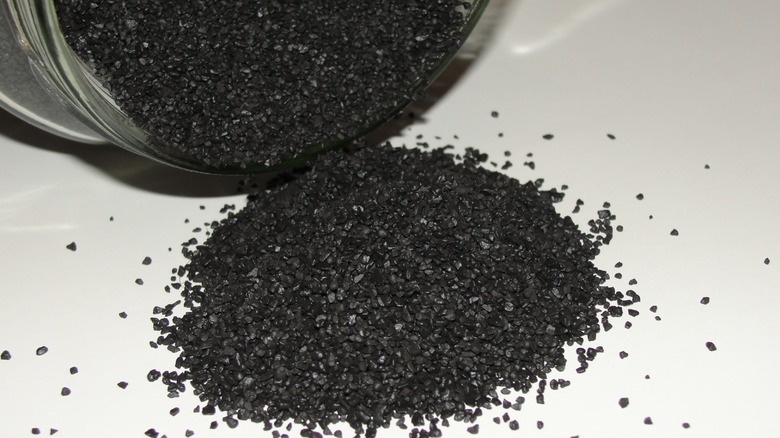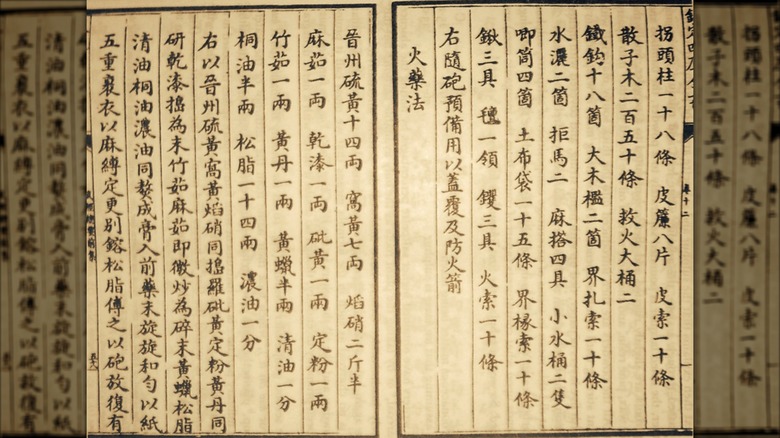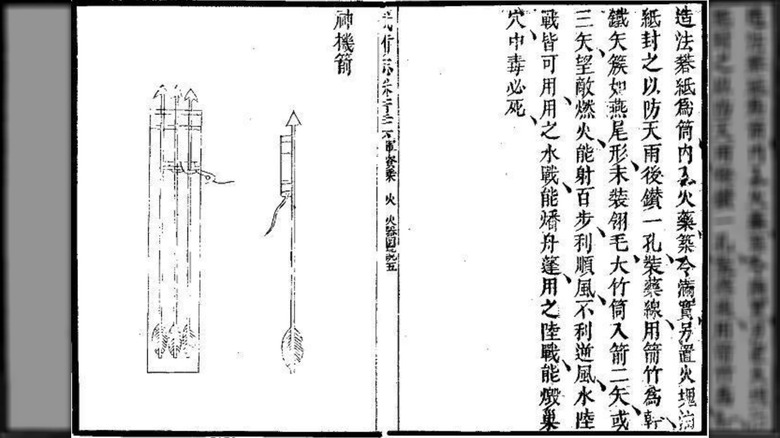How The Chinese Accidentally Invented Gunpowder
Throughout history, many inventions, and even tech items have been created accidentally, from champagne to penicillin. One such invention was gunpowder, which owes its origins not to destruction but to ancient Chinese desires for the elixir of life. Despite its destructive power, Chinese Taoist alchemists in the 9th century worked with saltpeter, sulfur, and charcoal, believing it could somehow extend a person's life well beyond the natural limit.
Of course, as we know now, gunpowder is pretty good at doing the opposite, as it's the basis for most firearms and explosives used in warfare. These Chinese alchemists had no interest in creating explosives, and saltpeter, known more commonly today as potassium nitrate (KNO3), was used for medicinal practices well into the late centuries B.C.E., though its effectiveness is open to debate. Regardless, experimentation with saltpeter had interesting and unexpected results when combined with other compounds, specifically sulfur and charcoal.
Modern gunpowder is actually quite different from what the Chinese created over a millennium ago, as it uses different ratios and altered components to create what is called "smokeless powder." As the Mongols began their rise in the 13th century, gunpowder spread across Asia, and at the time, the ratio was one part sulfur, three parts charcoal, and nine parts saltpeter. If this wasn't combined to exact specifications, ignition wasn't possible, and the recipe changed slightly to attain better results throughout much of history. Because of the Mongols, a recipe for the elixir of life was transformed into an instrument of war, and history was forever changed as a result.
The quest for the elixir of life
Numerous cultures throughout history have sought a means of extending lifetimes, from the myth of Juan Ponce de León's quest for the proverbial Fountain of Youth to Taoist monks' desire for the elixir of life. Nowadays, we use science and medicine to prolong people's lives, and while modern methods are more effective, the goal remains the same. The first recipe of what we'd call gunpowder first appeared in the 9th century C.E. text "Taishang Shengzu Jindan Mijue." Around 50 years later, it appeared in the "Zhenyuan miaodao yaolüe," pictured above.
The elixir of life had been sought as far back as ancient Mesopotamia, where it was mentioned in the "Epic of Gilgamesh." In China, numerous leaders sought the same, and it fell to Taoist alchemists to uncover its secrets. One of the reasons why they believed the components that make up gunpowder would work was a belief that the consumption of long-lasting minerals would impart their durable nature onto whoever consumes them. They tried everything from jade and cinnabar to gold and silver and many other materials along the way.
The first ruler of China, Qin Shi Huangdi, likely died from ingesting mercury in his quest for immortality, and his tomb is off-limits, partly because of the risk of uncovering the purported river of mercury contained within. Once gunpowder was accidentally discovered and proved itself to be less about extending life and more about its incendiary properties, it would take centuries before anyone thought to use it as a weapon of war. That came later, but one thing that did result relatively soon after was the invention of fireworks.
Gunpowder's impact on the history of warfare
While fireworks have their own storied history, gunpowder's use in weapons is far more impactful on the world. The Chinese began using gunpowder in the 10th century with a variety of crude bombs, fire lances, and guns. These were a far cry from what would follow, but it took a great deal of time for gunpowder to become a more stable mixture with a variety of uses. Fire arrows, as pictured above, were an early invention and were pretty much what you'd imagine.
They entered the battlespace in 1045 C.E. and were essentially arrows fitted with cartridges that functioned as rockets or missiles, extending the arrow's range significantly. Fast-forward a few centuries, and gunpowder found widespread use all over Europe and Asia. What started as a means of propelling arrows transformed into cannons, mortars, and a variety of guns. Move a bit further in time, and you will find the first modern recipe for gunpowder, which is a ratio of 10:15:75 of sulfur, charcoal, and saltpeter.
This is more stable and remains in use today. In the 14th century, Europeans added liquid to the mixture, forming a paste that would be formed into balls known as "corned powder." This vastly improved the use of gunpowder in a variety of weapons by making it more stable. While modern rockets and artillery systems like the High Mobility Artillery Rocket System (HIMARS) don't use anything like gunpowder, their existence is certainly owed to its accidental discovery. The modern world would look very different had Taoist monks not stumbled upon the right ratio more than 1,000 years ago, and had they not, human history would have unfolded quite differently.


